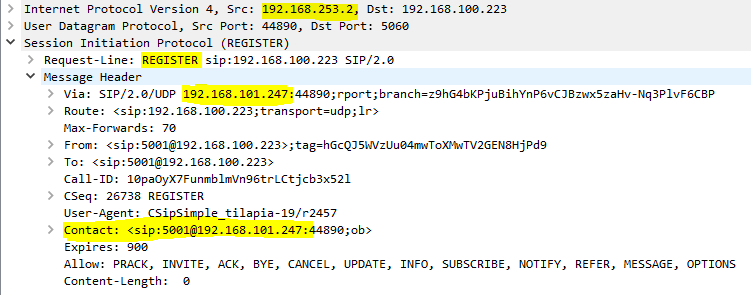Answer the question
In order to leave comments, you need to log in
PJSIP problem on Android over VPN?
Asterisk 13.12.2, PJSIP 2.5.5
The Asterisk server has an IP address of 192.168.100.223 and is connected to MikroTik.
MikroTik runs a PPTP server that distributes addresses from the 192.168.253.0 subnet, to which clients (smartphones) connect to use Asterisk.
A smartphone client connected via WiFi in another office (there is no routing between offices) has an IP address of 192.168.101.247, connects via PPTP to MikroTik and receives an IP address in the tunnel 192.168.253.2
SIP client on a smartphone successfully connects to Asterisk via IP 192.168 .100.223. In the Asterisk console:
pjsip show aors
Contact: 5001/sip:[email protected]:35028;transport= eef5336413 Avail 28.189

Answer the question
In order to leave comments, you need to log in
I'll answer my own question.
The problem with incorrect filling of SDP headers by mobile SIP clients can be solved in two ways, namely, by enabling interaction through NAT, even if NAT does not actually exist:
1. If the client supports the RPORT (RPORT for media) option, enable it on client - everything should work.
2. If the client does not support RPORT, then enable the following options on Asterisk:
2.1. If we work via SIP, then add the nat = comemedia
2.2 option to the client settings in sip.conf . If we work through PJSIP, then add the option rtp_symmetric = yes
to the endpoint section in pjsip.conf.
Thus, Asterisk ignores the SDP instructions and sends the RTP stream to where the packet came from.
For more information, see the document Migrating from chan_sip to res_pjsip (NAT) , where you can find NAT settings for both SIP and PJSIP
Didn't find what you were looking for?
Ask your questionAsk a Question
731 491 924 answers to any question